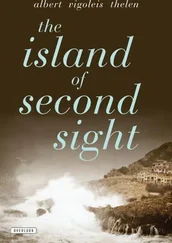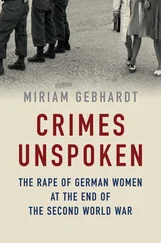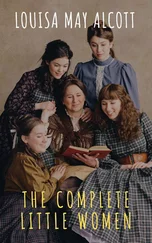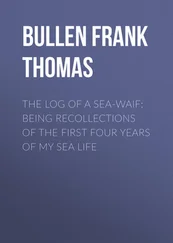I met Jenie Hahn at Jeju National University. She translated the oral histories of several haenyeo, including those of Ko Chun-geum, Kim Chunman, Kwon Youngae, and Jeong Wolseon, in which they spoke of the day-to-day practicalities of recruitment, ferries, food, and dormitory life for itinerant work in other countries. Jenie also sent me A Guide to Jeju Spoken in the Language of Jeju and English by Moon Soon-deok and Oh Seung-hun—which proved to be invaluable with its explanations of food, traditions, and aphorisms—and her translation of Kim Sooni’s “The Goddesses, the Myths and Jeju Island.” When I needed to confirm facts, Jenie graciously checked with Moon Soon-deok (Jeju Development Institute) and Kang Keonyong (a senior researcher at the Haenyeo Museum) for me.
Allow me to gently shift my thanks to more general categories: the island, cultural traditions, haenyeo, and the April 3 Incident. Jeju is thirty times the size of Manhattan. This lush and beautiful island is home to 25 percent of the entire plant species of Korea. It’s the native home of what we commonly call the Christmas tree. The first foreigners believed to visit the island were Hendrick Hamel and his crew of Dutch sailors, who were shipwrecked on Jeju in 1653. They were imprisoned in Seoul, but a few of them, including Hamel, escaped thirteen years later. Once he returned to the Netherlands, he wrote a memoir chronicling his travails, thereby introducing Jeju Island to the West. Hundreds of years later, in 1901, Siegfried Genthe, a German climber, sought and received permission to be the first Westerner to scale Mount Halla. He also wrote of his adventures, and even today Mount Halla is used by many mountaineers as practice for climbing Mount Everest. Jumping to the 1970s, David J. Nemeth did his Peace Corps stint on Jeju. He kept a diary, which was eventually published as Jeju Island Rambling . The island also became the subject of his dissertation, The Architecture of Ideology: Neo-Confucianism Imprinting on Cheju Island, Korea, and later he wrote Rediscovering Hallasan: Jeju Island’s Traditional Landscapes of Sincerity, Mysticism and Adventure . For other general information about Jeju, I relied on Stories of Jeju, published by the Jeju Development Institute. The Kim Mandeok Memorial Hall gave me insights into the legacy of this early female philanthropist. The exhibits at Jeju Hangil Memorial Hall provided details about the island’s anti-Japanese movements. The Folk Village offered a good sense of the varieties of architecture and their purposes on Jeju, while the Jeju Stone Cultural Park was a great place to learn about the many uses of this natural resource.
As stated throughout the novel, Jeju is quite different from the rest of Korea. The language, for example, is unlike standard Korean. The Jeju dialect is heavily nasal, and many words end abruptly, so they won’t disappear into the island’s rough breezes. It’s completely free from those elements of Korean that stratify tenses and grammar, telling people how to address everyone from the emperor down to a chicken. On Jeju, people greet each other as equals. The matrifocal nature of the island is manifested in its being home to ten thousand spirits and deities, with the vast majority of them goddesses. Goddesses and Strong Jeju Women, by Soonie Kim and Anne Hilty, and translated by Youngsook Han, tells the wonderful myths and stories of several of those goddesses. The writings of Chin Song-gi and Gui-Young Hong were also useful as I tried to re-create Jeju’s rich landscape of traditions. Every person I met graciously invited me to sample Jeju’s extraordinary and delicious cuisine. For a more scholarly look at food, however, I turned to Top 20 Jeju Local Dishes for Your Life and Health, published by Jeju National University’s Department of Food Science and Nutrition, and once again translated by Jenie Hahn.
As I begin expressing my gratitude to all those who helped me with additional information about the haenyeo, let me first note that this is not what Jeju’s sea women call themselves. They use jamsu, jamnyeo, or jomnyeo, which are all Jeju words. That said, the Japanese word haenyeo is how sea women are known internationally. This might be a good place to note that in 2004 a large abalone could fetch about 50,000 won or $60. These days, a haenyeo can make approximately $26,000 a year for part-time work.
One of the first articles I found as I began my research was a piece written in 1967 by Suk Ki Hong and Hermann Rahn in Scientific American about a study looking at whether the haenyeo’s ability to withstand cold was genetic or an adaptation. This question fascinated me, and down the rabbit hole I went. Through additional articles in American Headache Society , American Physiological Society , Journal of Sports Sciences , and the Undersea and Hyperbaric Medical Society, I learned invaluable details about breath holding, decompression sickness, energy metabolism, and body temperature for both Korea’s haenyeo and Japan’s ama. The following are grouped by research paper: Hideki Tamaki, Kiyotaka Kohshi, Tatsuya Ishitake, and Robert M. Wong; Jay Chol Choi, Jung Seok Lee, Sa-Yoon Kang, Ji-Hoon Kang, and Jong-Myon Bae; William E. Hurford, Suk Ki Hong, Yang Saeng Park, Do Whan Ahn, Keizo Shiraki, Motohiko Mohri, and Warren M. Zapol; and Frédéric Lemaitre, Andreas Fahlman, Bernard Gardette, and Kiyotaka Kohsi. The following collaborated in various groupings on multiple papers: N. Y. An, K. A. Bae, D. S. Han, S. K. Hong, S. Y. Hong, B. S. Kang, D. H. Kang, C. Kim, C. K. Kim, P. K. Kim, Y. W. Kwon, I. S. Lee, S. H. Lee, K. S. Paik, S. C. Park, Y. D. Park, Y. S. Park, D. W. Rennie, S. H. Song, C. S. Suh, D. J. Suh, and C. S. Yoon.
I’d also like to acknowledge Choe Sang-hun, Alison Flowers, Priscilla Frank, Gwi-Sook Gwon, AeDuck Im, Kim Soonie, Joel McConvey, Simon Mundy, Lee Sunhwa, and Catherine Young for their magazine articles and academic essays on the haenyeo, shamanism, and Jeju’s women in general. For current issues related to the sea, I turned to a survey in Marine Policy about production, economics, and management of marine resources conducted by Jae-Young Ko, Glenn A. Jones, Moon-Soo Heo, Young-Su Kang, and Sang-Hyuck Kang. Also informative was a transcript of an interview by Youngmi Mayer with three haenyeo—Jung Won Oh, Ko Jun Ja, and Mun Yeon Ok—for Lucky Peach: The Gender Issue and reprinted in Harper’s magazine, and Ines Min’s interview with diver Kim Jae Youn for COS . I also found articles about the haenyeo on the following websites: Ancient Explorers, The Jeju Weekly, Culture24, and Utne Reader. I have the deepest admiration for scholars who embed themselves in a culture. Haejoang Cho lived on Udo Island, which is part of Jeju, in the 1970s. Her dissertation, An Ethnographic Study of a Female Diver’s Village in Korea, provided me with great details about the lives of haenyeo, their views on men, and translations of rowing songs. I visited the Haenyeo Museum several times. The exhibits allowed me to examine haenyeo tools and diving costumes up close. The videotaped oral histories of elderly haenyeo offered wonderful details. The staff gave me books published by the museum— Mother of the Sea and Jeju Haenyeo —and introduced me to haenyeo who lived nearby.
In addition to the interviews that were arranged in advance, Grace Kim and I also spoke to haenyeo as they waited to be taken to the sea, gathered seaweed on the shore, or were coming out of the water with their catches. Among these were Kang I-suk, Kim Wan-soon, and Kim Won-seok. I’d like to single out Kim Eun-sil, who worked as a haenyeo on Jeju and as an itinerant diver to help her family, and Yun Mi-ja, who, among other things, shared what life was like for her in Vladivostok. To understand the functions and importance of the bulteok, I relied on the research of Eun-Jung Kang, Kyu-Han Kim, Kyeonghwa Byun, and Changgen Yoo. Artist Mikhail Karikis’s video and sound installation about the haenyeo and Hyung S. Kim’s wall-sized photographic portraits of divers helped me to visualize the physical attributes of the older Young-sook, Kang sisters, and others. I was fortunate to meet Barbara Hammer in New York and talk to her about her documentary, Diving Women of Jeju-do . Journal Films’ Families of the World series produced a lovely little documentary about a twelve-year-old girl learning to dive on Jeju in 1975.
Читать дальше












